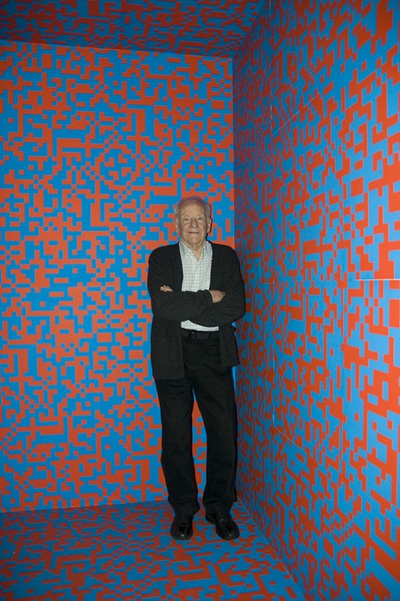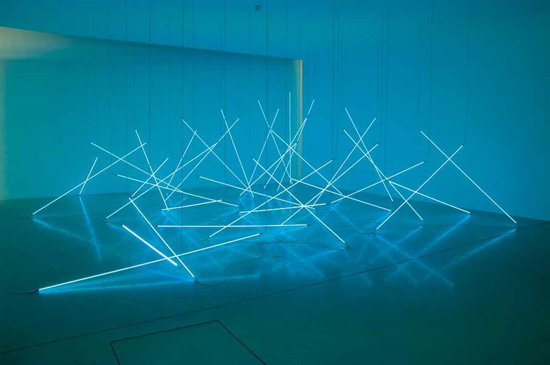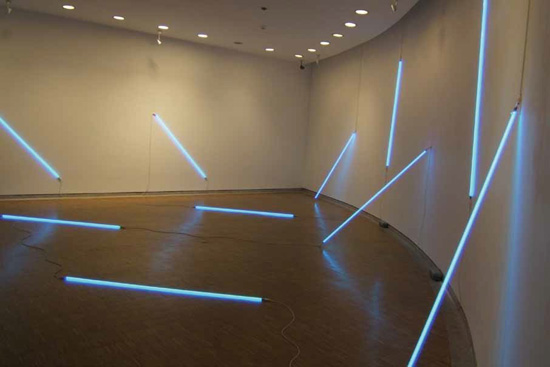|
Introduction of the artist:

Francois MORELLET (France)
Born in 1926, Cholet, France. Lives and worksin Paris and Cholet.
Selected solo exhibitions: 2011 Fran?ois Morellet – Réinstallations, Center
Pompidou, Paris; 2007 Blow Up 1952-2007, Musée d’Art Moderne de la Ville de
Paris; 2000 – 2004 Fran?ois Morellet, an international touring exhibition that
included five international venues; 1989-1990 Fran?ois Morellet –Regards
sur l'?uvre 1957-1989, an international touring exhibition that included five
international venues;
Selected group exhibitions: 2008 Color Chart, MoMA,
New York and Tate Liverpool; 2004 – 2005 Beyond Geometry: Experiments in Form,
1940s-70s, Los Angeles County Museum of Art and Miami, Art Museum; 2002 Paris:
Capital of the Arts 1900-1968, Royal Academy of Arts, London and Guggenheim
Museum Bilbao; 1981 Paris – Paris, Center Pompidou, Paris; 1977 Documenta 6,
Kassel, Germany; 1970 the 35th Venice Biennale, Italy; 1968 Documenta 4, Kassel,
Germany; 1965 The Responsive Eye, MoMA, New York; 1964 Documenta 3,
Kassel, Germany.
Introduction of works:



Francois Morellet makes abstract works – paintings, drawings, sculptures and
installations. They are smart not only in their wit – their titles betraying
Morellet’s fondness for humour, especially in the form of puns and other word
play – but also in their propositions which are often derived from mathematics
and geometry. Much of his artistic output can be characterised as “systematic”
as the artist has explained in an oft-quoted statement: “... I doggedly produced
systematic works, the guiding principle being to reduce my arbitrary decisions
to a minimum. In order to channel my sensibility as an ‘Artist’, I did away with
composition, removed any interesting aspects from the execution and rigorously
applied simple, straightforward systems that could either develop through true
randomness of by means of audience participation”.
Morellet has often used light as a medium, especially fluorescent and neon,
and thus conveys the idea of art as fugitive, something that shines light on us
rather than being itself the object of attention. For this exhibition he
offers ?Weeping Neonly, comprising white neon tubeslinked together by
their wiring, all the same length and hanging in four vertical sets against a
wall, each one connected to a transformer fixed above. The position of the tubes
is determined by drawing lots, using the number ?, and thus the trajectories of
their straight linespoint every which way. The overall effect, enhanced by the
loose hanging wires, is wonderfully chaotic.
| 
